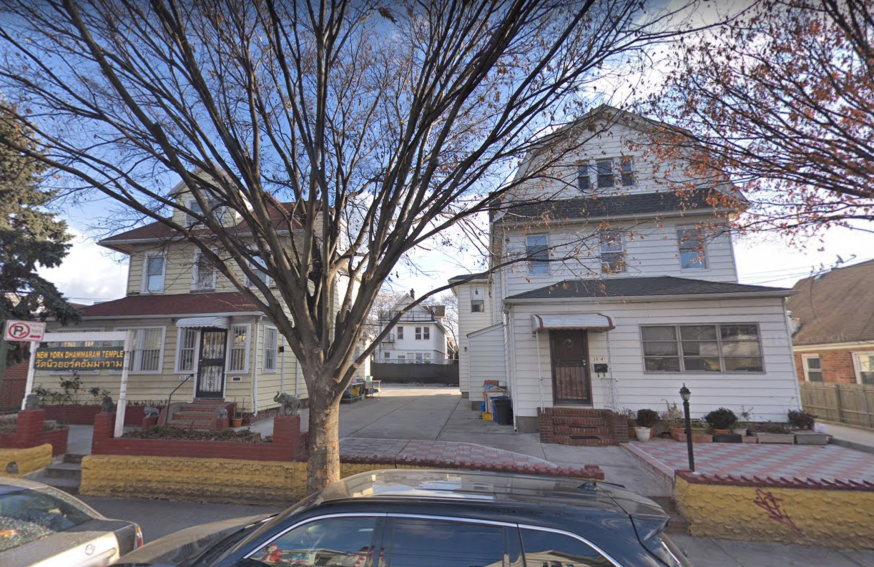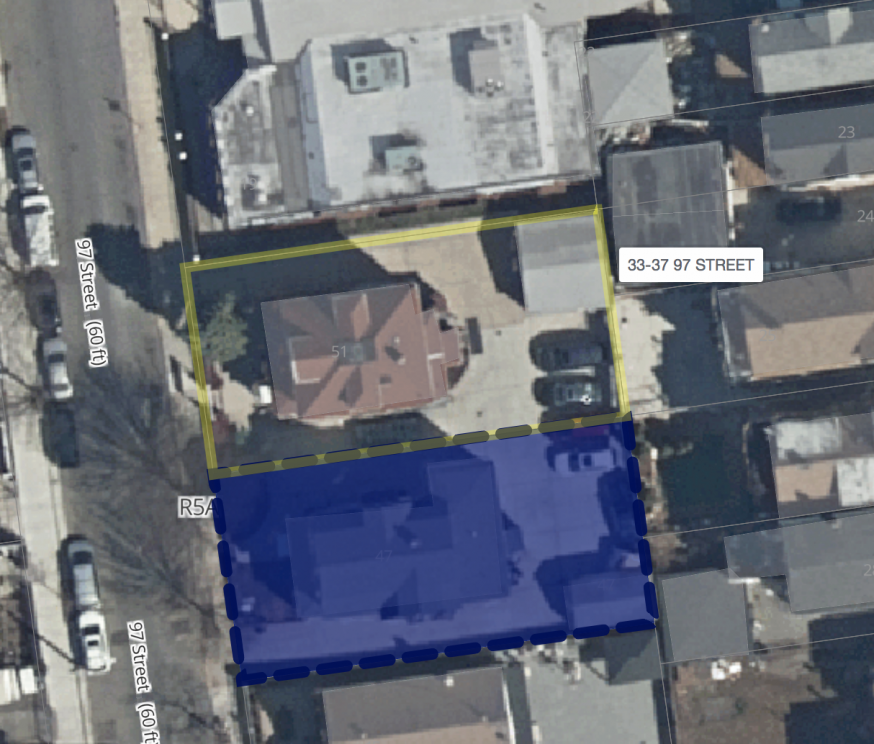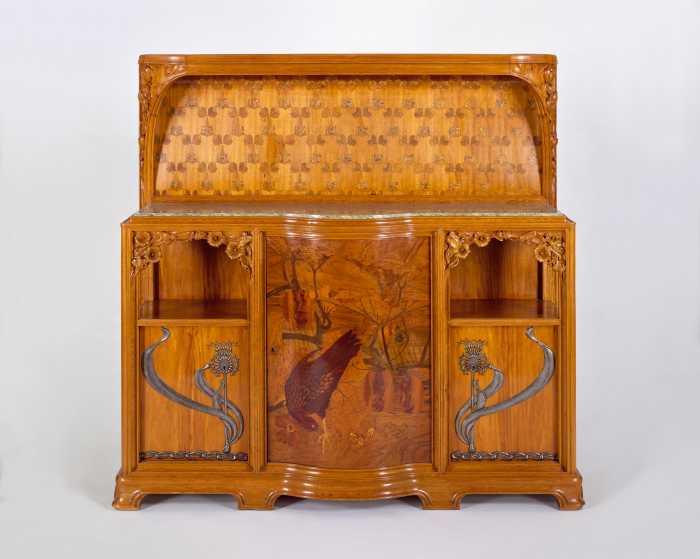
Location of Monastery (left) with current structure used as Temple for services (right)
(Google Maps)
March 29, 2019, By Meghan Sackman
A Buddhist congregation in Corona has applied to demolish a three-family house that it currently uses for its temple and replace it with a traditional house of worship.
The congregation of the New York Dhammram Temple, in association with the Khippapanyo Buddhist Monastery, filed plans with the DOB on March 21 to build a two-story temple at 33-41 97th St. in Corona.
The group plans to demolish the existing house, in order to make way for a more traditional Buddhist temple, according to a spokesperson for Beneli Group Architect & Design, the architect designing the temple.
The new temple is proposed to be 3,535 square feet and 35 feet tall. It would stand next to the Buddhist Monastery, located next door at 33-37 97th St., where four Buddhist monks currently live.
This building, referred to as a Buddhist monastery, would act as a temporary place of worship until construction of the new temple is complete.
Records show the new temple would also have a 30 foot backyard and 12 foot front yard.
The temple’s congregation, which has about 700 members, can currently fit only about 40 people at once for religious services, according to Vutichai Ngosuwan, a member of the congregation’s advisory board.
The new temple would double the capacity, Ngosuwan said.
People from Corona, Jackson Heights, Elmhurst, and even New Jersey utilize the space for religious services that have been offered daily since the Buddhist temple was founded in 2002, Ngosuwan said.
According to Ngosuwan, the 700 members of the congregation, along with the monks at the monastery, have been saving money for the project for years and that most of the funds for the project are donation based.
“The current building has cost us a lot in repairs,” Ngosuwan said of the standing structure. “We would be better off building a new building that can hold more people and better serve the monks and congregation.”
The current structure, according to public records, is located in a residential area.

Zoning Map of both current structures (zola.planning.nyc.gov)
Zoning approval for the new temple and permits for demolition, according to Beneli Architects & Design Group, will “hopefully” take four to five months and then construction can begin after that.
2 Comments







Buddhist? I don’t know what that is but sounds like immagrants to me
Good for the Buddhist community of this area I am glad they will have a better place to worship and practice their religion. Please pray for our town, borough, state, country, and, planet.